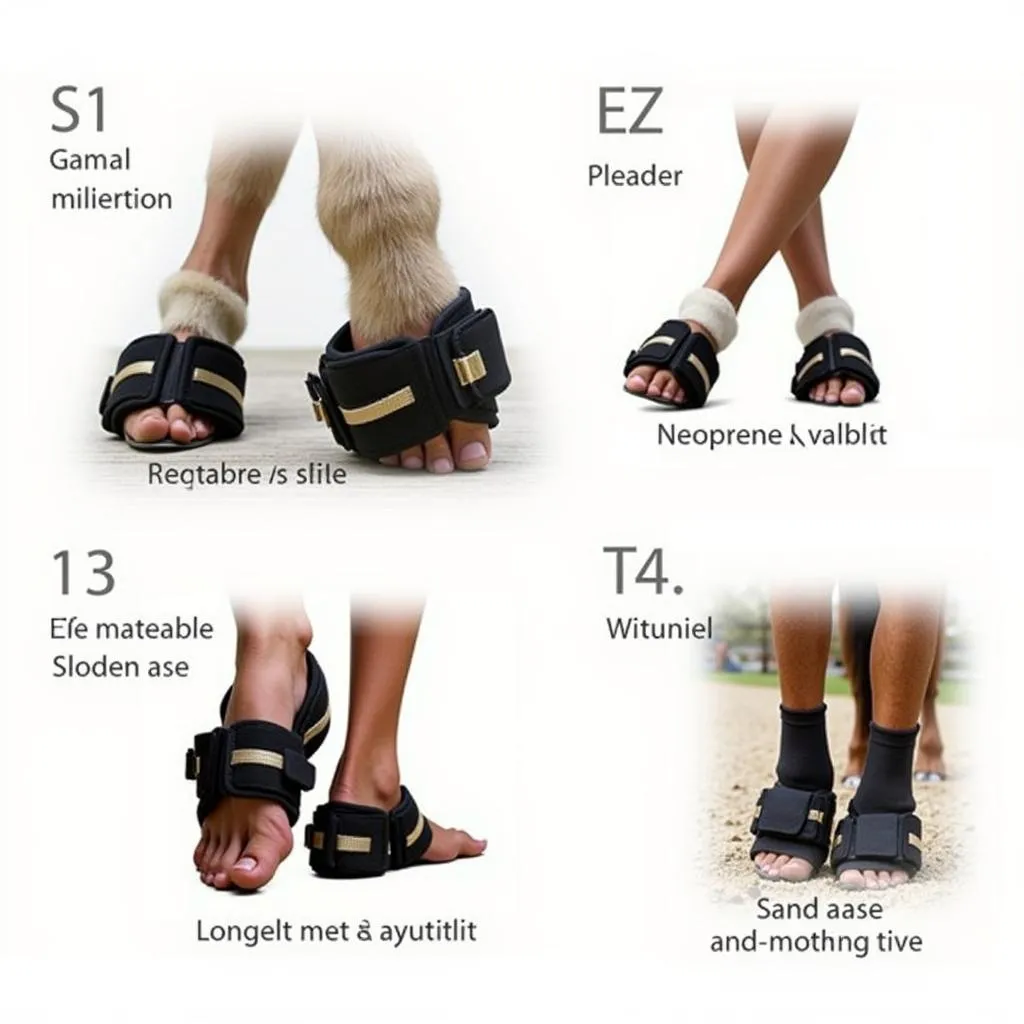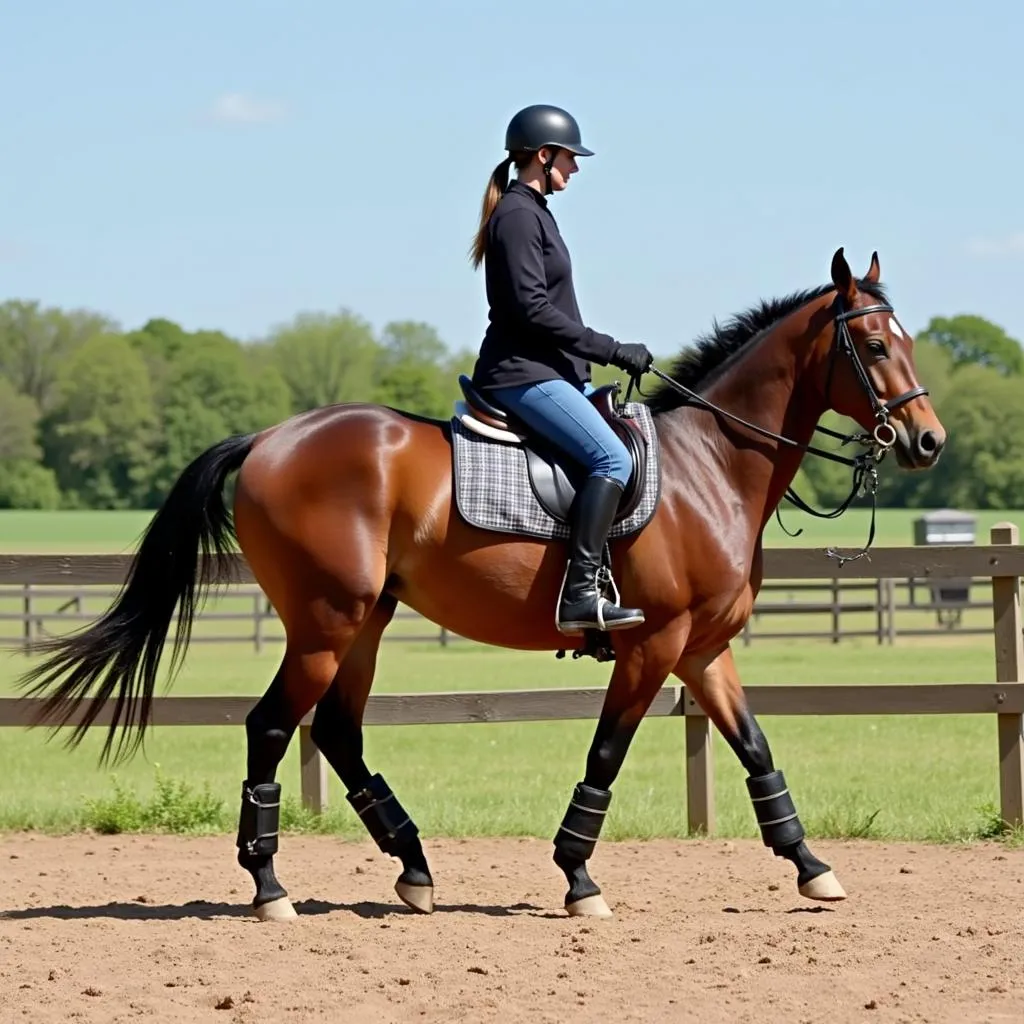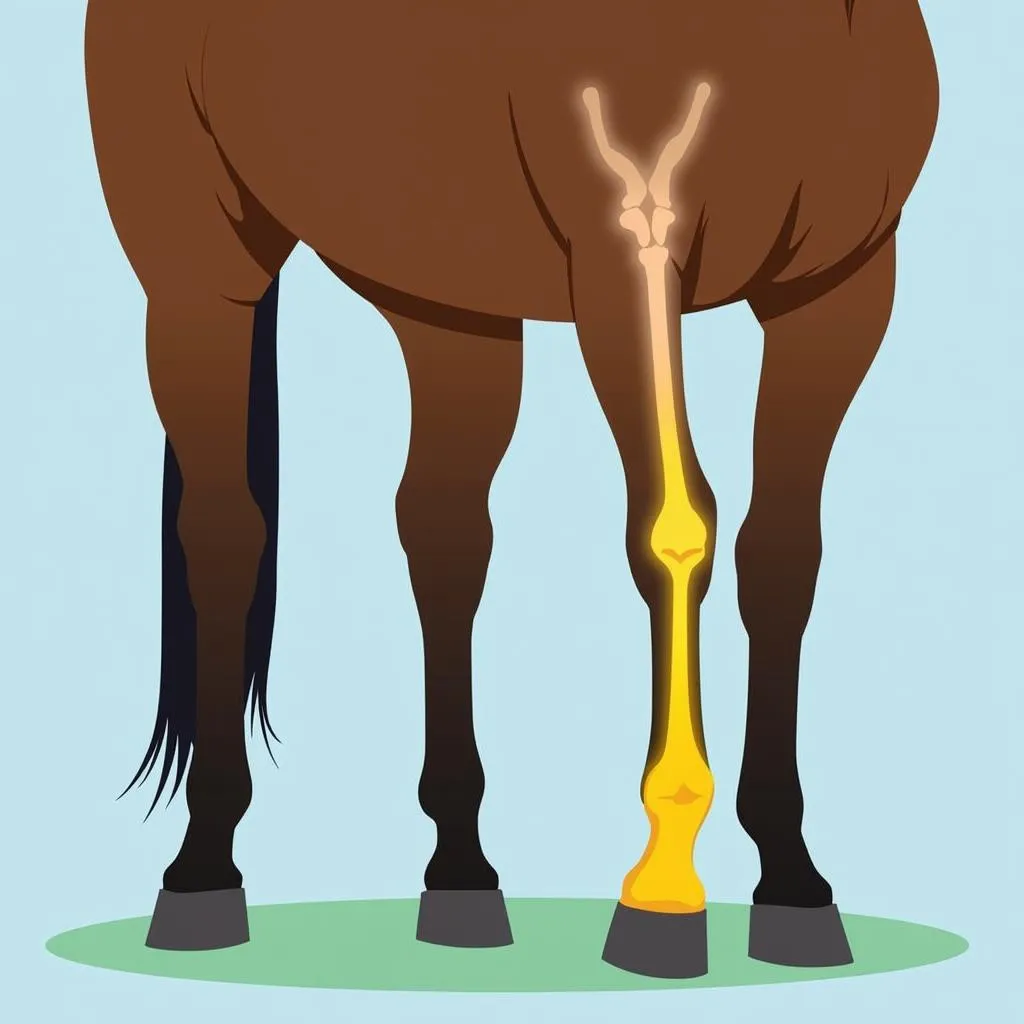Horse Leg Weights are a common training tool used by equestrians to enhance muscle development, improve gait, and address specific training challenges. While they can be beneficial when used correctly, it’s crucial to understand their purpose, benefits, risks, and proper application to ensure the well-being of your equine partner.
 Different Types of Horse Leg Weights
Different Types of Horse Leg Weights
Understanding Horse Leg Weights
Horse leg weights are exactly as their name suggests: weights designed to be worn on a horse’s legs. They come in various forms, from simple neoprene wraps with pockets for adding weight to more elaborate leather cuffs with adjustable weight systems. The primary purpose of these weights is to add resistance to the horse’s natural movement, encouraging specific muscle groups to work harder.
Benefits of Using Horse Leg Weights
When used appropriately and as part of a well-rounded training program, horse leg weights can offer several benefits:
- Increased Muscle Strength and Definition: The added weight forces leg muscles to work harder, leading to increased strength and definition, particularly in the shoulders, forearms, gaskins, and hindquarters.
- Improved Gait and Range of Motion: By strengthening specific muscle groups, leg weights can help improve a horse’s gait, making their strides longer, more fluid, and balanced.
- Enhanced Flexibility and Suppleness: The resistance provided by the weights can encourage a greater range of motion in the joints, leading to improved flexibility and suppleness.
- Corrective Training: In some cases, veterinarians or equine therapists recommend leg weights to address specific gait abnormalities or muscle imbalances.
 Horse Wearing Leg Weights During Training
Horse Wearing Leg Weights During Training
Risks and Considerations
While horse leg weights offer potential benefits, it’s essential to be aware of the risks and use them responsibly:
- Overexertion and Injury: Excessive weight or prolonged use can strain tendons and ligaments, potentially leading to injury. Always start with a lighter weight and gradually increase as the horse adapts.
- Skin Irritation: Ill-fitting weights can rub against the horse’s skin, causing irritation or sores. Ensure a proper fit and check regularly for any signs of discomfort.
- Interference with Gait: If weights are too heavy or used improperly, they can negatively impact the horse’s natural gait, leading to an unnatural or choppy stride.
Choosing the Right Horse Leg Weights
Selecting the appropriate type and weight of leg weights is crucial for your horse’s safety and the effectiveness of your training. Consider the following factors:
- Weight: Begin with a lighter weight and gradually increase as the horse builds strength. A veterinarian or experienced equine professional can help determine an appropriate starting weight.
- Material: Neoprene weights are generally lighter and more suitable for shorter training sessions. Leather weights offer greater durability and adjustability for more intensive workouts.
- Fit: Leg weights should fit snugly but not too tightly. Ensure there is enough room for two fingers to fit comfortably between the weight and the horse’s leg.
How to Use Horse Leg Weights Safely
- Consult a Professional: Before incorporating leg weights into your horse’s training regimen, consult with your veterinarian or an experienced equine professional. They can assess your horse’s individual needs and guide you on safe and effective usage.
- Gradual Introduction: Introduce leg weights gradually, starting with short sessions and lighter weights. Observe your horse closely for any signs of discomfort or fatigue.
- Proper Fit: Ensure the weights fit snugly without restricting blood flow or causing discomfort. Check the fit regularly throughout the training session.
- Supervise Your Horse: Never leave your horse unattended while wearing leg weights.
- Monitor for Signs of Discomfort: Watch for any signs of lameness, swelling, heat, or pain in your horse’s legs. If you notice any of these signs, remove the weights immediately and consult your veterinarian.
 Horse Leg Anatomy Highlighting Tendons
Horse Leg Anatomy Highlighting Tendons
Frequently Asked Questions About Horse Leg Weights
Q: How long can a horse wear leg weights?
A: Start with short sessions, around 15-20 minutes, and gradually increase the duration as your horse adapts. Never leave leg weights on for extended periods or overnight.
Q: Can I use leg weights on a young horse?
A: It’s best to avoid using leg weights on young, growing horses, as their bones and joints are still developing. Consult with your veterinarian for guidance.
Q: Are leg weights suitable for all disciplines?
A: Leg weights can be beneficial in various disciplines, but their appropriateness depends on the specific training goals and the horse’s individual needs.
Conclusion
Horse leg weights can be valuable tools for enhancing your equine partner’s strength, gait, and overall fitness when used responsibly and as part of a balanced training program. Always prioritize your horse’s well-being, consult with professionals, and use leg weights with care and attention to detail.
For personalized advice on using horse leg weights and other training tools, our team at Justus Horses USA is here to assist you. Contact us at 0772127271, email us at [email protected], or visit us at QGM2+WX2, Vị Trung, Vị Thuỷ, Hậu Giang, Việt Nam. We’re dedicated to providing exceptional care and support for you and your equine companions 24/7. You may also find our article on children’s horse blankets helpful.